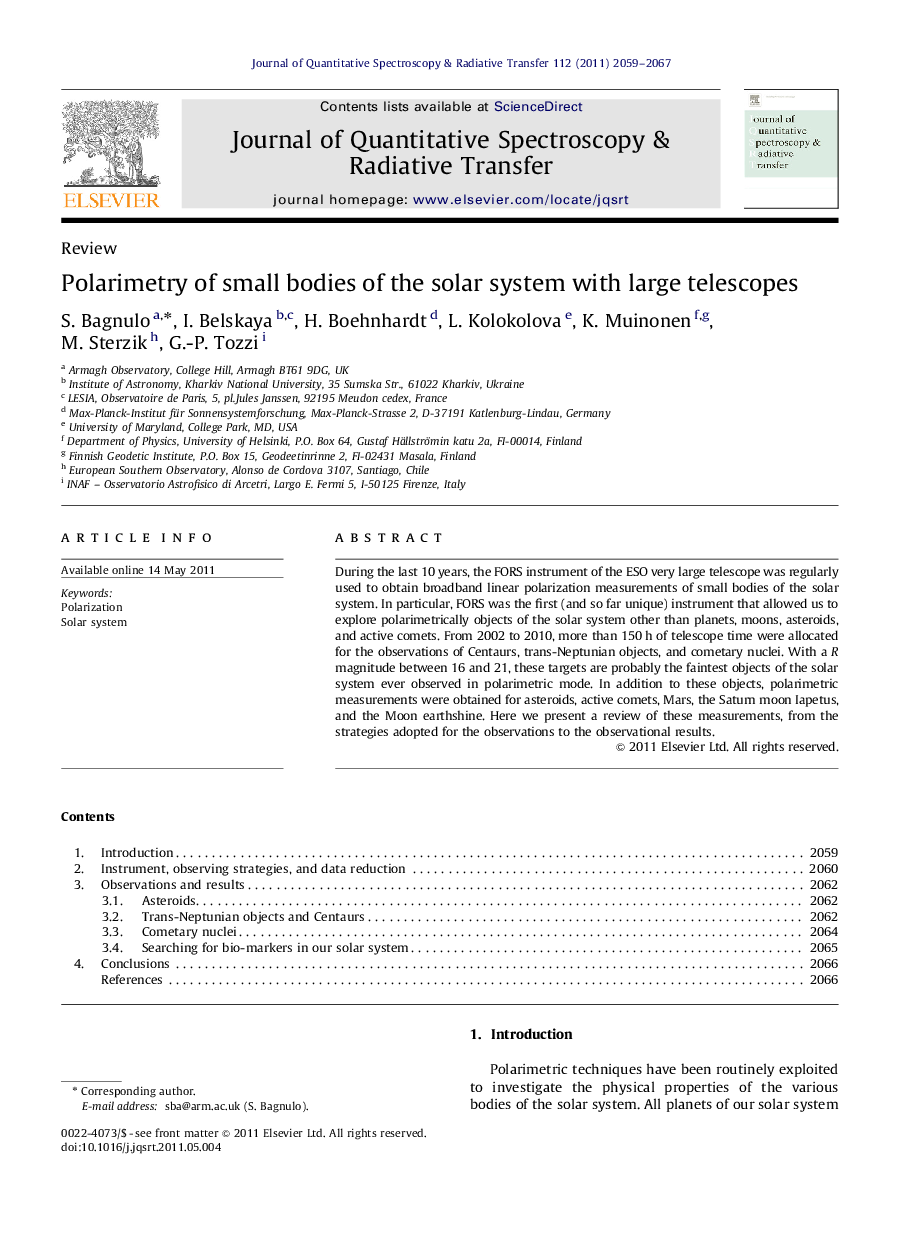| Article ID | Journal | Published Year | Pages | File Type |
|---|---|---|---|---|
| 5429720 | Journal of Quantitative Spectroscopy and Radiative Transfer | 2011 | 9 Pages |
During the last 10 years, the FORS instrument of the ESO very large telescope was regularly used to obtain broadband linear polarization measurements of small bodies of the solar system. In particular, FORS was the first (and so far unique) instrument that allowed us to explore polarimetrically objects of the solar system other than planets, moons, asteroids, and active comets. From 2002 to 2010, more than 150Â h of telescope time were allocated for the observations of Centaurs, trans-Neptunian objects, and cometary nuclei. With a R magnitude between 16 and 21, these targets are probably the faintest objects of the solar system ever observed in polarimetric mode. In addition to these objects, polarimetric measurements were obtained for asteroids, active comets, Mars, the Saturn moon Iapetus, and the Moon earthshine. Here we present a review of these measurements, from the strategies adopted for the observations to the observational results.
⺠We review FORS polarimetric observations of small bodies of the solar system. ⺠FORS1 was the first instrument used to monitor in polarimetric mode Centaurs and TNOs. ⺠Polarimetry may be used as a remote sensing tool for extraterrestrial life.
